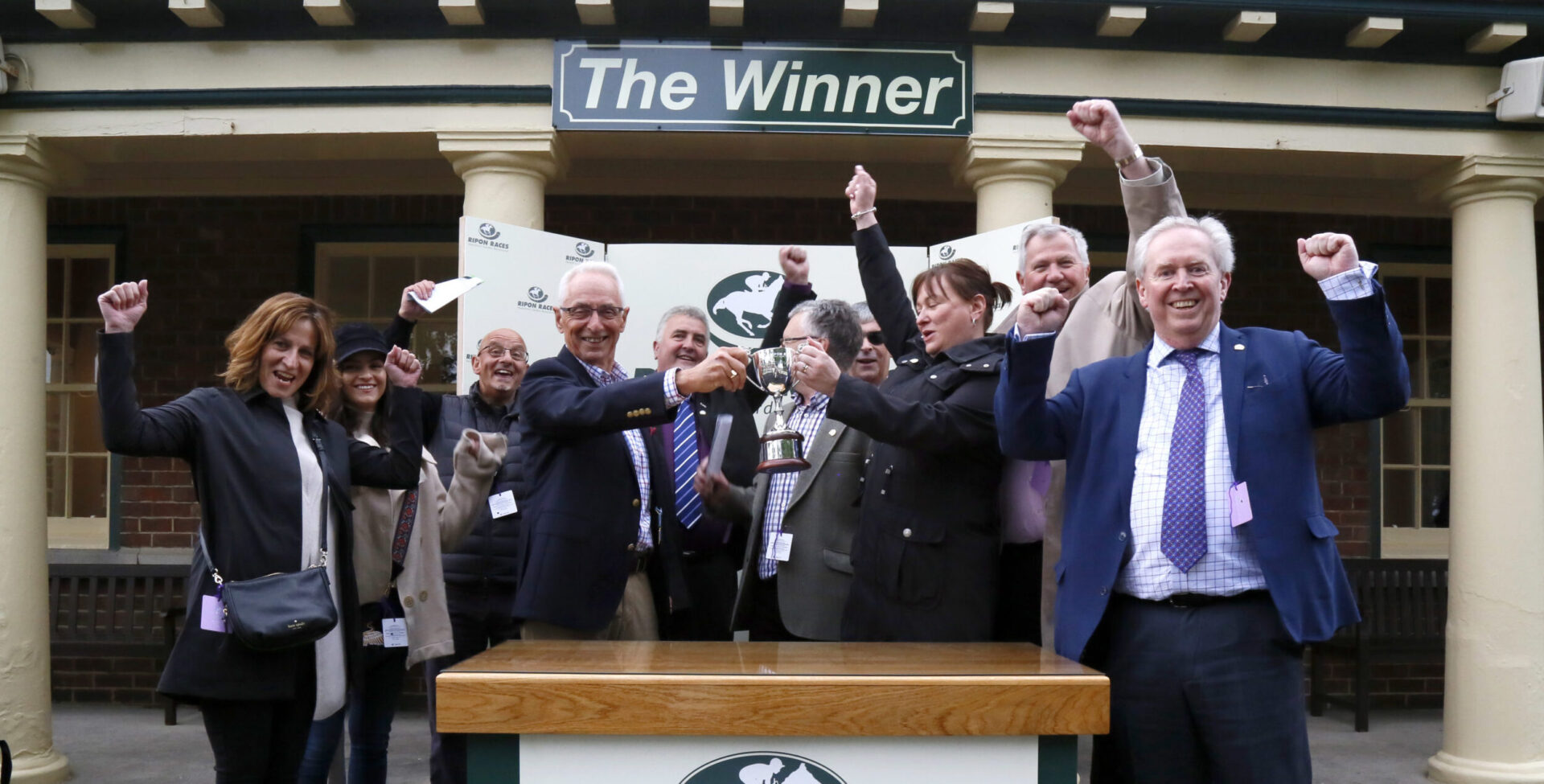
Great St Wilfrid Handicap, 6f, August
There cannot be many people who have a race named in their honour even though they have been dead for over 1,300 years, but that is the case with St Wilfrid, who is commemorated with Ripon’s big sprint handicap every August.
St Wilfrid, who was born in 634, was a Northumbrian noble who devoted himself to a religious life after studying on Holy Island, Canterbury, France and finally Rome.
He founded a monastery in Ripon around 660 and became Archbishop of Northumbria in 668 while he travelled the country founding monasteries and spreading the Christian message. It was on his travels that he died in Oundle, Northamptonshire around 710, but he remains closely linked with Ripon and is the city’s patron saint.
Today, the race in his name is one of the most competitive sprint handicaps in the racing calendar, but it was not always so.
When it was first run in 1839, two years after the current racecourse opened, it was titled the St Wilfrid Gold Cup, a conditions race over two miles. The winner was the five-year-old Fieschi, owned by Mr H. Wormald.
Small fields plagued the next three runnings, which included a walk over for Jack Shepherd in 1841 and as a result, the race became a two miles handicap in 1843.
The first winner was Hippona, who carried 6st 2lbs. The filly was owned by Mr R. Harrison, who had bred her not too far from Ripon at Studley Park. Hippona was later sold to race in Russia, where she was very successful and went through her career there unbeaten.
After initial success as a handicap, support began to wane again and by 1862, The Field despondently reported: “The Great St Wilfrid Handicap was once the chief attraction of the meeting, but on the present occasion dwindled down to eleven subscribers of which seven were content to stand their ground”.
In 1865, to try and revive interest, the distance was reduced to 14 furlongs and after three years was reduced again becoming a handicap over a mile and a half in 1868, a move which produced mixed results. After only six horses lined up for the 1878 race, the distance was reduced again to 10 furlongs.
The race did not become a six-furlong sprint until 1956 when it was won by the 7-1 chance Prairie Emblem, trained at Malton by William Dutton for owner Mr F. White and ridden by the previous season’s champion apprentice Peter Robinson.
One man who did not worry about the distance was the great Northern jockey John Osborne, who rode in his first race at Radcliffe, Lancashire in 1846 at the age of 13 and in his last in 1892 at the age of 59 and who is the last jockey to have ridden a Northern-trained Derby winner at Epsom.
Known as ‘the Bank of England jockey’ because of his reliability and integrity, Osborne loved the Great St Wilfrid Handicap which he first won on Ada Murray in 1849 when he was 16 years old. By the time he was 18, he had completed three wins in a row with Lady Eden (1850) and Mrs Birch (1851), the latter named after the lady who lived at Glasgow House in Middleham.
Surprisingly, he rode only one other winner, Pretty John in 1869, notable for the fact that Osborne walked to the racecourse from his Middleham home – a distance of 21 miles – at a brisk enough pace to lose 5lbs so that he could do the 8st 7lbs on Pretty John.
As well as being a top jockey, Osborne also owned and trained horses, at first with his brothers Thomas and William, but latterly on his own account.
He owned four Great St Wilfrid winners, Dart (1866), an unnamed filly who ran as ‘sister to Little Agnes’ (1868), Confusion (1882) and Languid (1895) all of which he trained with his brothers, while he also trained another unnamed winner, the Memoria filly who won the 1910 race in the colours of Mr W.Cliff.
Osborne is credited with being the first man to both ride and train a winner of the Great St Wilfrid although others have achieved the feat including well-known names like Harry Wragg and Doug Smith.
Another to achieve that feat was Bob Colling, who rode Newcourt to win in 1891 and Linny to win for the Osbornes in 1894 and then trained Lovetin, who has the distinction of winning the only wartime running of the race in 1941.
Although seven horses have won back-to-back runnings of the Great St Wilfrid, Desmond (1860-61), Star And Garter (1870-71), Lady Mary (1974-75), Pampas Grass (1886-87), Jacksdale (1920-21), Whitebrigg (1954-55) and Pepper Lane (2011-12), none has managed three in a row.
Jackside might have done, but for some reason the 1919 race, the first after a four-year break for the First World War, was run over a mile, an inadequate trip for the horse. So, instead, Jackside ran in and won the 10-furlong Ripon City Welter Handicap earlier in the day, before taking the next two Great St Wilfrids when it was returned to 12 furlongs.
William I’Anson is the most successful trainer in the race with five winners between 1881 and 1902 followed by John Osborne, four winners between 1866 and 1910 and John Drislane, whose four winners came in eight runnings from 1883 to 1890.
Leading the way among current trainers are Michael Easterby and David O’Meara with three winners each.
The most successful jockey in the Great St Wilfrid is James Fagan, who rode six winners between 1875 and 1893, followed by John Osborne and Billy Nevett with four each. Tom Bruckshaw and Charles Ringstead both had three winners, the same as Danny Tudhope, the most successful of current jockeys. Alex Greaves, who won on Premier Touch in 1991, is the only female jockey to have won the race,









